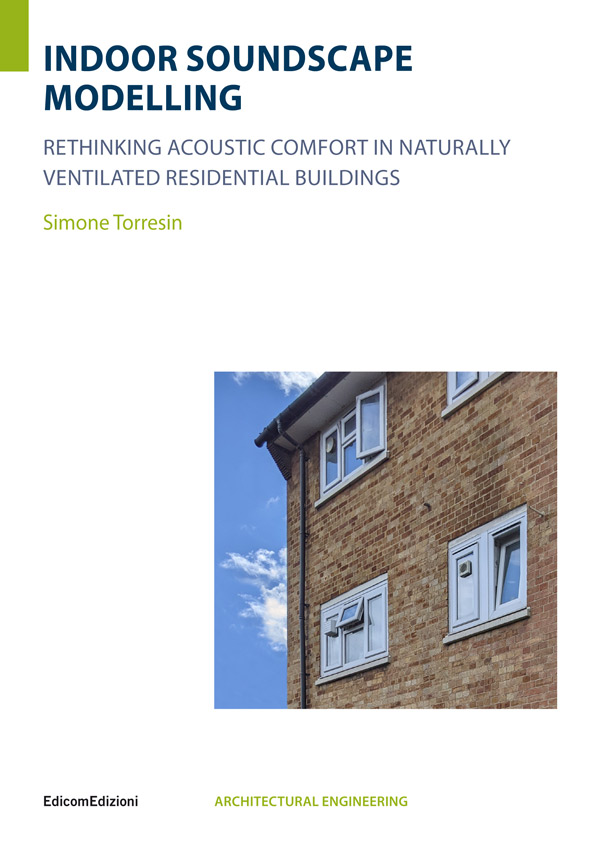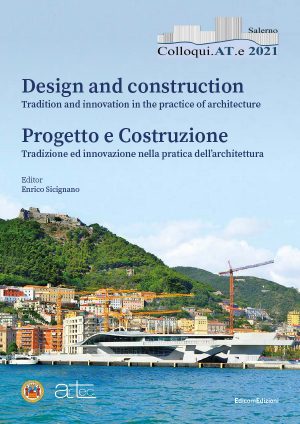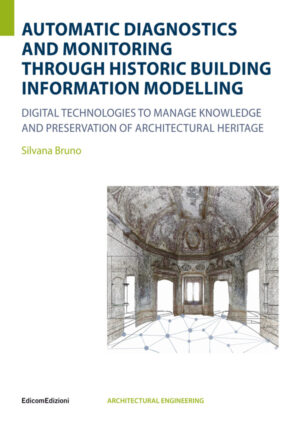Indoor Soundscape Modelling
15,60€
Rethinking Acoustic Comfort in Naturally Ventilated Residential Buildings
Simone Torresin
eBook in formato PDF
The connection to the outdoors created by open windows has so far been one of the main impediments to the adoption of natural ventilation, due to indoor noise levels easily exceeding design requirements. Starting from the apparent conflict between ventilation and acoustic comfort needs, the study explores the opportunities for shaping healthy and supportive acoustic environments through sound transmitted via ventilation openings. The research question challenges the traditional approach to acoustic design, which assumes noise annoyance reduction by merely reducing decibel noise levels, drawing inspiration from the soundscape concept. Soundscape science characterises the human response to the acoustic environment in context and can help understand if and how natural ventilation may contribute to defining spaces that sound good to their occupants. However, the soundscape framework, as described by ISO 12913 standard series, has been primarily developed for use in the context of urban planning.
Through several experimental activities – a systematic literature review, expert interviews, laboratory listening tests and a large scale online survey – the work investigates (i) how the soundscape approach can be applied to the indoor built environment, (ii) what factors positively influence it and (iii) how it can be measured in residential buildings, thus framing the ‘indoor soundscape’ concept.
CONTENTS
Preface
Abstract
1. Introduction
1.1. Why natural ventilation?
1.2. Natural ventilation and acoustics
1.2.1 Acoustic design criteria for naturall ventilated residential buildings
1.2.2 Façade noise control strategies enabling NV
1.3. Problem statement
1.3.1 The fragmented approach towards IEQ
1.3.2 The lack of a perceptual perspective
1.4. The soundscape concept
1.5. Research questions
1.6. Structure of the book
2. Assessment methods and factors determining positive soundscapes: a literature review
2.1. Background and aim
2.2. Methods
2.3. Results
2.3.1 Factors influencing the perception of the acoustic environment in dwellings
2.3.2 Study designs, acoustic measures, and soundscape data collection methods
2.4. Discussion and outcomes
2.4.1 Factors influencing indoor soundscapes: the multi-factorial nature of acoustic perception
2.4.2 Methods to measure indoor soundscapes: state of the research and differences with ISO/TS 12913-2
2.5. Concluding remarks
3. Emerging themes on indoor soundscape research: expert interviews
3.1. Background and aim
3.2. Methods
3.3. Results
3.3.1 How can acoustic design contribute to shaping regenerative buildings?
3.3.2 What differences and similarities exist between outdoor and indoor soundscape approaches?
3.3.3 How can indoor soundscapes be measured?
3.3.4 What is the potential of sound management for biophilic design?
3.3.5 How are “wanted” sounds related to health outcomes?
3.4. Discussion and outcomes
3.4.1 Defining indoor soundscape descriptors under a multi-domain perspective
3.4.2 Developing soundscape data collection tools for indoor environments
3.4.3 Providing scientific evidence of sound benefits on emotion, cognitive performance, and health outcomes through soundscape-based research
3.4.4 Designing indoor soundscape strategies
3.4.5 Developing soundscape prediction tools
3.5. Concluding remarks
4. The development of a model for indoor soundscape assessment: a laboratory experimenth
4.1. Background and aim
4.2. Methods
4.2.1 Participants
4.2.2 Factors and categories employed in the factorial design of the experiment
4.2.3 Experimental set up and exposure conditions
4.2.4 Attribute rating scales
4.2.5 Test procedures
4.2.6 Data analysis
4.3. Results
4.3.1 Principal component analysis
4.3.2 Relationships between principal components, acoustic indicators, and sound-categories
4.3.3 Effect of outdoor and indoor sound type on principal components
4.4. Discussion and outcomes
4.4.1 Comfort and Content
4.4.2 Familiarity
4.5. Concluding remarks
5. Model application: online survey during the COVID – 19 lockdown
5.1. Background and aim
5.2. Methods
5.2.1 Participants
5.2.2 Questionnaire design
5.2.3 Data analysis
5.3. Results
5.3.1 Difference in soundscape evaluation based on the activity
5.3.2 Comfort-content combinations in relation to soundscape appropriateness
5.3.3 Association between comfort, content, and well-being
5.3.4 Factors influencing window opening behaviour while WFH
5.3.5 Influences of acoustical, building, urban and person-related factors on well-being and on soundscape dimensions
5.4. Discussion and outcomes
5.4.1 Differences in soundscape evaluation based on the activity
5.4.2 Comfort-content combinations in relation to soundscape appropriateness
5.4.3 Association between comfort, content, and well-being
5.4.4 Window opening behaviour
5.4.5 Factors influencing the ‘comfort’ dimension
5.4.6 Factors influencing the ‘content’ dimension
5.4.7 Factors influencing well-being
5.5. Concluding remarks
6. Discussion
6.1. The soundscape approach applied to the indoor built environment
6.2. Factors positively affecting indoor soundscapes
6.2.1 Comfort
6.2.2 Content
6.2.3 Connecting comfort and content results: privacy, control, and engagement
6.3. How to measure indoor soundscapes
6.4. The potential of natural ventilation to improve indoor soundscapes
7. Conclusions
7.1. Main findings
7.2. Impact on academia, industry and society
7.3. Limitations
7.4. Future research
References
Appendix A – List of studies included in the systematic literature review
Appendix B – Expert interview questionnaire
Appendix C – Component Matrix
Appendix D – Questionnaire extract
Appendix E – Summary of variables included in the path models
Appendix F – Survey: descriptive statistics
Simone Torresin
Assistant Professor at the University of Trento, Department of Civil, Environmental, and Mechanical Engineering (Trento, Italy), and Honorary Research Fellow at University College London (UCL), UCL Institute for Environmental Design and Engineering (London, UK).
Informazioni aggiuntive
| formato | 21 x 29,7 cm |
|---|---|
| pagine | 200 |
| ISBN | 979-12-81229-01-3 |
| lingua | inglese |
| collana |





